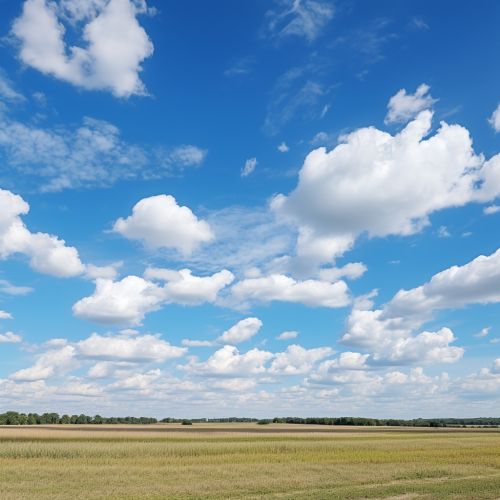Front (meteorology)
Overview
A front in meteorology is the boundary separating two masses of air of different densities, and is the principal cause of meteorological phenomena. In surface weather analyses, fronts are depicted using various colored lines and symbols, depending on the type of front. The air masses separated by a front usually differ in temperature and humidity.
Classification
Fronts are classified into four types: cold fronts, warm fronts, stationary fronts and occluded fronts.
Cold Fronts
A cold front is defined as the transition zone where a cold air mass is replacing a warmer air mass. Cold fronts generally move from northwest to southeast. The air behind a cold front is noticeably cooler and drier than the air ahead of it. When a cold front passes through, temperatures can drop more than 15 degrees within the first hour.


Warm Fronts
A warm front is defined as the transition zone where a warm air mass is replacing a cold air mass. Warm fronts generally move from southwest to northeast. The air behind a warm front is noticeably warmer and more humid than the air ahead of it. When a warm front passes through, the air becomes noticeably warmer and more humid than it was before.
Stationary Fronts
A stationary front is a boundary between two different air masses, neither of which is strong enough to replace the other. They tend to remain essentially in the same area for extended periods of time. A wide variety of weather can be found along a stationary front, but usually clouds and prolonged precipitation are found there.
Occluded Fronts
An occluded front (also called an occlusion) is formed during the process of cyclogenesis when a cold front overtakes a warm front. When this occurs, the warm air is separated (or occluded) from the cyclone center at the Earth's surface. The point where the warm front and the cold front meet (and consequently the occlusion forms) is called the triple point.
Formation
Fronts form when two air masses of different temperature, moisture, and density characteristics meet. If the differences between the air masses are large enough, the front can be the site of severe weather such as thunderstorms and tornadoes. On weather maps, the surface position of the front is marked with the appropriate symbol for the type of front and the air mass behind the front is cooler than the air ahead of it.
Weather Changes
Fronts are the principal cause of significant weather. Changes in the weather, including changes in the wind, temperature, humidity, clouds, and precipitation, often occur with the passage of a front. The weather changes depend on the characteristics of the air masses involved in the front.
Cold Front Weather Changes
When a cold front passes, the temperature and humidity decrease, the pressure rises, and the wind shifts (usually from the southwest to the northwest in the Northern Hemisphere). If the cold front is highly active, it can cause severe weather, including heavy rain, thunderstorms, hail, and tornadoes.
Warm Front Weather Changes
When a warm front passes, the temperature and humidity increase, the pressure drops, and the wind shifts (usually from the northeast to the southwest in the Northern Hemisphere). If the warm front is highly active, it can cause weather phenomena such as fog, light rain, and stratus clouds.
Frontal Systems
A frontal system is a series of fronts, usually associated with an area of low pressure, that move along a similar path. Frontal systems can cause a wide variety of weather conditions, from clear skies to severe weather. The type of weather depends on the types of fronts involved in the system and the characteristics of the air masses that the fronts separate.
